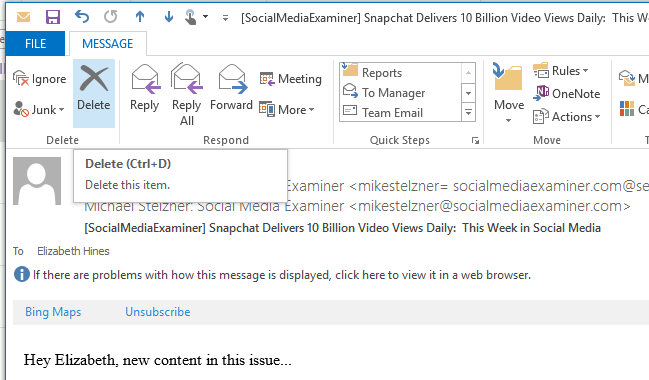
by Fronetics | May 9, 2016 | Blog, Marketing, Social Media, Strategy

A cross-departmental social media team will improve your company’s social presence.
At a former job, I was part of a team pushing for expanding access to our company’s social media pages. The accounts were administered by a handful of marketing managers, who did not want to relinquish control. After all, weren’t we using social media for marketing purposes? Why would the content or sales teams need access? Wouldn’t that cause chaos and anarchy?
No. In fact, giving access to key people in various departments could actually help your company get more out of social media.
The truth is, social media is too integral to too many different aspects of a business to control it in a silo. The title of a recent Harvard Business Review article says it all: “Social Media Is Too Important to Be Left to the Marketing Department.”
Businesses can use social media for everything from generating leads to gaining market intelligence. And today’s customers expect a brand’s social media accounts to answer all sorts of different needs, from product inquiries to problems with their orders. If only one team is responsible for operating your pages, they need to be able to perform multiple functions, to liaise effectively between customers and internal stakeholders, or to forego some of the valuable benefits of social media.
For example, say your customer does not receive part of a shipment and posts on your Facebook feed to say as much. The marketing person managing your social media either has to 1) also be trained in customer service, 2) reach out to someone on your customer service team (or someone who can locate the shipment) and act as a go-between with the customer, 3) ask the customer to contact someone else in your company, or 4) ignore the post. Any way you slice it, it’s not efficient or a good use of anyone’s time.
That scenario is more common than you might think. Research shows that the number of customers who expect a response through social media has doubled in the last three years, and that seven of eight messages to companies go unanswered for 72 hours. Imagine if your customer service department didn’t respond to emails or pick up the phone for three days!
My former company suffered enormously from problems like these. The marketing managers administering our social accounts were spending hours each week tracking down various employees in other departments to help them problem-solve. They didn’t have time to strategize about content distribution. And even the best communicators were so overloaded with other tasks that leads were going cold before being handed to the sales teams.
If each department identified an employee responsible for overseeing social media, we could have functioned so much more efficiently and effectively. The marketing manager would be responsible for marketing messaging; the content person for generating and distributing content; the sales team for identifying leads and building relationships; and customer service for handling customer inquiries and problems.
Of course, having that many cooks in the kitchen is not without its problems. Keith Quesenberry, the author of the aforementioned HBR article, offers this advice for building a cross-functional social media team from his book Social Media Strategy, Marketing, and Advertising in the Consumer Revolution:
- Develop a social care team that can address all areas of social information efficiently and effectively. Identify policies and software systems needed for implementation.
- Organize departmental responsibilities in the social care team. Clearly define roles and responsibilities among marketing, customer service, public relations, sales, corporate communication, human resources, etc.
- Assign specific employees from each department to social media tasks. Set up social media accounts and give employees access to social media systems.
- Create brand guidelines for standards, tone, and style of social media communication. Ask legal and human resources to provide a list of do’s and don’ts for real-time consumer engagement.
- Define specific goals based on key performance indicators such as response time, sentiment analysis, engagement, views and shares, and other important metrics.
With the right planning and people in place, a cross-departmental social media team is better suited to interact with customers and business partners on these platforms, and it can help your business get the most out of its social media accounts.
Related posts:

by Fronetics | May 5, 2016 | Blog, Content Marketing, Marketing, Strategy

Speak your boss’ language with metrics, statistics, and facts that articulate content marketing’s impact on customer acquisition and sales.
Garnering C-suite support for your content marketing program can be a challenge. Your team knows that your strategy is working by evaluating a series of metrics (e.g., shares, website traffic, email click-through rates), but executives do not always understand the value of such measures. It is almost like marketers speak another language.
So, how do you articulate the value of content marketing in a way that your executives will understand and support? Think of it this way: It is like that scene in the movie Jerry Maguire, only it is your boss demanding, “Show me the money!” The C-suite wants to know the cost to the company and the dollar amount of the return for any marketing initiative you undertake. Basically, you need to quantify success in terms of customer acquisitions and new sales.
Don’t focus on the secondary results, or “soft” metrics like per-post Facebook engagement. Talk the C-suite’s language, and demonstrate how your content marketing efforts led to new customers and what those customers are worth to the company’s growth and success.
Report these six metrics to win C-suite support
- Customer Acquisition Cost (CAC): This is the total average cost your company spends to acquire a new customer. Basically, what your company spends in marketing costs, divided by the number of new customers it produced.
- Marketing Percentage of the CAC: This is the marketing department costs divided the costs of the sales and marketing costs to get the marketing percentage of overall cost per new customer. The figure demonstrates if more is going into the sales team or the marketing team to produce the current result, and the lower the percentage the better.
- Ratio of Customer Lifetime Value to CAC: This figure estimates the total value that your company derives from each customer versus what you spend to acquire them.
- Time to Payback CAC: This estimate demonstrates how many months it takes for your company to earn back the CAC it spent acquiring your new customers.
- Marketing-Originated Customer Percentage: This is where you look at all of the new customers from a set time period and determine what percentage of them started with a lead generated by your marketing team.
- Marketing-Influenced Customer Percentage: This figure highlights all of the new customers that marketing interacted with at the time they were still just leads.
Additional selling points for content marketing
Content marketing can make a big impact on your company in terms of spreading brand awareness, growing your audience, and helping form business relationships. Though these benefits are difficult to quantify, try using the following statistics and facts to articulate the value your program could have in a way your executives will understand.
- As any business knows, it is essential to be where you customers are, and they are online. Your competitors know this, too. In fact, a recent study indicated that that 77% of companies surveyed, across industries, had plans to increase their digital marketing budgets in the coming year.
- The B2B buying process has evolved, and now content is an essential tool for generating and nurturing leads. Reportedly, 88% of B2B marketers use content marketing as part of their programs, with lead generation (85%) and sales (84%) being the most important goals.
- Blog content has long-term value, as what you post today may continue attracting traffic months (or years) from now. Your posts last indefinitely, outliving more traditional marketing methods, such as a print advertisement in a magazine.
- Consistently publishing quality content can earn your company a reputation as a thought leader in your industry. The public will come to trust your company as a respected source of knowledge, and you’ll begin forming relationships with readers who want to know more about your products and services. People buy from companies that they trust and feel connected to.
- Content marketing will get you more bang for your buck. Results are not instant, but, with time, you can actually reduce your marketing expenses while increasing your reach and growing your business.
- Content marketing is a valuable business intelligence tool. By distributing content through social media platforms, you not only engage potential customers, but you get their feedback and learn more about their needs and wants.
For more on marketing metrics that will articulate success to your boss, download Fronetics Strategic Advisors’ tip sheet.
Related posts:

by Fronetics | May 4, 2016 | Blog, Content Marketing, Marketing, Strategy

Having a documented content marketing strategy increases effectiveness and provides a baseline for measuring ROI.
Content marketing is one of the most effective ways to increase brand awareness, broaden your customer base, and grow your business. Yet of the 88% of B2B marketers using content marketing, only 30% feel their efforts are successful. Why do so many organizations feel they are failing? Simply put, they do not have a documented content marketing strategy in place.
You would never operate your business without 1) creating a strategy, 2) documenting it, and 3) following the strategy. Nor should you launch a marketing program without having a clear idea of what you want to accomplish and how you plan to do that.
A content marketing strategy outlines the methods by which you will target, reach, and engage your audience. Research and execution of these tasks can be quite complex. Writing out a plan and assigning appropriate resources can offer clarity and guidance to your organization throughout the course of your program.
Also, remember that content marketing is more of a marathon than a sprint, and achieving results often takes months, even years. Documenting your strategy allows your team to keep focused on your goals and your plan for achieving them in the interim.
Here’s why you should take the time to draw up a plan and then write it down.
A documented content marketing strategy is more successful than an undocumented strategy or no strategy at all.
Research conducted by the Content Marketing Institute reveals that businesses that document their content marketing strategy find their efforts significantly more effective than those who don’t. Among B2B marketers surveyed:
- 60% of those with a documented strategy rate themselves highly, in terms of content marketing effectiveness.
- Only 32% of those with a verbal strategy rate themselves highly.
- Of those who rate their organization’s content marketing programs as not at all effective, a mere 13% have a documented strategy.
Further, organizations who meet regularly to check in on their content marketing strategy are much more likely to find it successful — 61% of the most effective marketers surveyed meet daily or weekly to review their progress.
A documented content marketing strategy helps measure ROI.
Many B2B businesses struggle with content marketing or have trouble garnering C-suite support for the program because return on investment is notoriously difficult to measure. In fact, more than half of marketers say one of their top challenges is measuring content effectiveness (57%) and/or measuring the ROI of their content marketing program (52%).
Having a documented strategy in place gives your organization measurable goals against which to compare your results. Your strategy should:
- Document what you hope to achieve through content marketing — more leads, higher conversion rates, more newsletter sign-ups, etc.
- Outline a specific methodology for executing those goals
- Assign human resources to each of the tasks
- Designate intervals at which to check in and evaluate/adjust your efforts
- Offer a time frame for completion
Documenting your strategy in such a way clarifies where you are investing time and resources so that calculating ROI is less of an abstract process.
Content Marketing Institute’s research confirms that content marketing success increases when there is organizational clarity about what success looks like, and that organizations with a documented content marketing strategy feel they are successful at tracking ROI. While only 21% of marketers feel they are successful at tracking ROI, that number rises to 35% when there is a documented strategy in place.
Related posts:


by Fronetics | May 3, 2016 | Blog, Content Marketing, Marketing, Strategy

These tips will help you optimize your marketing emails to improve open rates.
Are you spending time creating marketing emails that nobody opens?
Today, everyone’s inbox is inundated with social media notifications, contests and giveaways, and marketing emails from every company they have even considered buying from in the last five years. How do you make your message stand out enough to not get deleted — let alone, read?
First and foremost, you must look at first-impression factors like subject lines, overall design, organization and formatting, and even when you are sending your emails.
For example, you may imagine potential customers sitting at their desks first thing each morning and going through emails, but that is not necessarily the case. Email marketing company Constant Contact finds that optimal open times vary widely by industry. But, truth be told, the best time for your business to send emails will be unique to your business — and the best way to know when is to test.
Another important factor to consider is how your potential customers are reading email. A recent Experian study found that 56% of email opens occur on a mobile device. If you send a marketing email that is not optimized for mobile, more than half of your recipients are straining and struggling to read your content. You’ve given them a good reason to delete it instead of reading it.
With these things in mind, how do you create marketing emails that potential customers will actually open and read? Here are a few basics:
Optimize what the recipient first sees.
Your sender name should be easily identifiable as coming from you, as this will influence if your reader opens your message.
Convey your point in the subject line.
Your subject line is the first thing your readers see and a major determinant in whether the recipient will open your email or hit delete. It should be short (under 70 characters so it does not get cut off), catchy, and attention-grabbing, but also to-the-point. Recipients should understand what the email is about without even opening it, but the subject line should hook them into wanting to know more.
Create a sense of urgency.
Give customers a reason to act quickly, rather than let the email sit in their inbox. Craft this sense of urgency within your subject line with some form of time limit or “what-you-must-know-now” phrasing.
Avoid words that label your email as spam.
Always avoid using words like “Cash,” “Quote,” and “Save.” Filters are designed to move emails with these words into spam.
Make it personal.
If the recipient is someone with whom you have done business or a potential customer that has signed up for newsletters or promotions, make it personal. Including their name makes the email feel conversational and almost rude if they don’t open it and at least see what you have to say to them. Studies show that personalized email subject lines increase open rates across industries by as much as 40%.
Certainly, open rates are not the only measure of success when it comes to marketing emails. But, to achieve your goals, it is vital to optimize the number of people who actually read your marketing message. Simply put, you cannot reach your audience unless you garner their interest quickly and get them to open up your message.
Related posts:

by Fronetics | May 2, 2016 | Blog, Content Marketing, Marketing, Social Media, Strategy, Supply Chain

Image credit: startbloggingonline.com
Here are three of the top benefits of social media for businesses in the supply chain and logistics industries.
We know that the majority of businesses participate in social media — in fact, a dominant 88% of B2B marketers report using these platforms as part of their marketing programs. Large corporations, small businesses, and those in between are promoting their brand and engaging with customers online. Even companies within the logistics and supply chain industries are joining the bandwagon and reaping the benefits of social media marketing.
The truth is, if your company is not participating in social media, you are at a disadvantage. Your customers, your employees, and your competitors are taking advantage of these technologies to conduct business in new, more efficient ways.
Why are so many companies using these tools?
Here are just three of the top benefits of social media for business:
1) Communicate and engage
By participating in social media, your business has at its fingertips a highly efficient, sophisticated platform for engaging customers, employees, potential hires, industry peers, and the general public. You can announce a new product launch; share small or sweeping changes in service, supplies, practices, locations, etc.; respond to questions or complaints; weigh in on industry discussions happening on online forums; and celebrate employee milestones and accomplishments.
2) Generate and nurture leads
Social prospecting is the process of using social technologies to identify and pursue potential customers that may be interested in your company but that don’t yet know about it. Your business can prospect from the 2.3 billion worldwide social media users, engage them with relevant content, and form and build relationships that you otherwise would have never encountered were it not for the World Wide Web.
3) Reduce marketing expenses
It’s free to set up social media accounts for your business. The real cost comes with dedicating resources to maintain and monitor the content on each channel, and those needs will vary from business to business. Even if you do chose to upgrade and pay for premium benefits and services, like ads, the cost is significantly lower than using many traditional mediums. One recent study suggests that the cost per thousand impressions (CPM) could be as low as $2.50, while traditional tactics, like direct mail ($57 CPM) and TV ads ($28 CPM), remain significantly higher.
Learn more about social media for business in Fronetics’ new white paper, Social Media and the Logistics and Supply Chain Industries. The paper defines social media and social technologies, identifies users and usage patterns, and describes more benefits companies within the logistics and supply chain industries can realize through participation.

Related posts:








